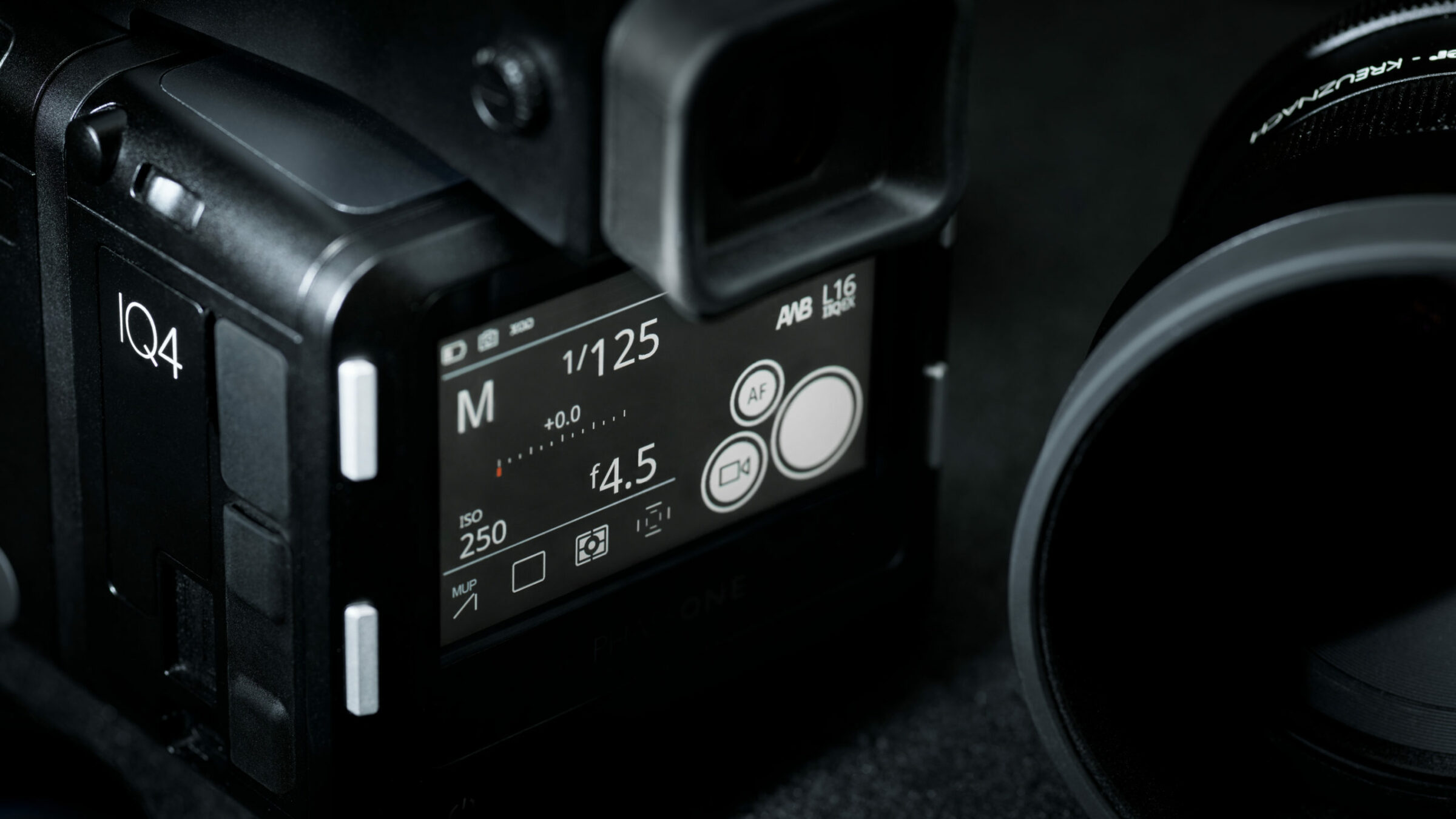IQ4 Digital Back Features
Built on the Infinity Platform
At the core of the IQ4 is the Infinity Platform, which lays a powerful foundation for image quality advancement, workflow transformation and feature evolution. The Infinity Platform is built to grow, expand and adapt, allowing Phase One engineers to explore new possibilities in digital imaging and approach conventional photographic methods from new perspectives.
With the Phase One Lab program, every IQ4 photographer is invited to help shape the future of their camera, with access to exclusive beta features.
Full frame medium format
The full frame medium format sensors found in IQ4 Digital Backs, 1.5x the size of crop sensor mirrorless medium format and 2.5x that of full frame DSLR, allow you to capture more data, providing more detail and impressive results so that you can achieve your creative vision straight out of the camera.
With the expanded output flexibility provided by the high resolution and up to 15 stops of dynamic range, your workflow options grow exponentially.

Powerful workflow flexibility
Capture One Inside
The cutting-edge RAW editing core of Capture One has been directly integrated in the Infinity Platform, providing advanced control within preview and image settings, and opening the door for future customization of the RAW file at the time of capture.
Capture One Inside ensures the most efficient and controlled capture workflow, bringing the capture and post-capture workflows closer together than ever before.
Today, Capture One Inside delivers:
- Custom IQ Styles
- 4k JPEG processing in-camera
- Powerful image quality and preview performance
- Enhanced Live View, faster frame rates
Future-proof tethering options
Attuned to the professionals’ workflow, multiple tethering options capable of handling the high bandwidth are included in the IQ4 – Ethernet, USB-C and Wireless. All tethering and local storage options can be combined and customized to address your specific workflow needs.
Wireless
Wireless tethering can be used to transfer RAW files to Capture One in addition to storing them in-camera. This solution can be used as a backup or as part of a custom workflow. In addition, the AdHoc Wifi connection provides a direct connection to any device via Capture One or the upcoming Cascable Mobile App, to extend workflow and capture flexibility.
Ethernet
Ethernet grants the potential for a fully customized, integrated and dynamic workflow, and the flexibility to capture into or through any Ethernet-supported device. In addition, the long cable lengths and power provided via Ethernet eliminates workflow concerns surrounding battery power or cable length.
USB-C
USB-C provides a standard port type for convenient tethering on a wide variety of common devices. USB-C also delivers multiple power integration options, including powering your IQ4 via common USB-C power banks.
Ethernet and USB-C allow data transfer and system integration with no additional accessories necessary – transfer from local storage to any host without removing the card. And with a variety of cable lengths available, both Ethernet and USB-C can be exactly configured to suit your workflow needs.
Power management
The IQ4 gets an extra power boost thanks to Power over Ethernet (PoE) and USB-C options, which are able to provide power directly to the IQ4. Ethernet tethering and PoE provide an uninterrupted workflow when shooting in the studio, while external power banks can be utilized to extend uptime in the field via USB-C.
Dual storage
With both XQD/CFexpress and SD card support, the IQ4 gives you the flexibility to store captured files in a way that suits your workflow. Save a backup RAW or process a JPEG to a second storage option, or simply expand your total storage so that you can focus on getting every shot.
XQD | CFexpress
These card types facilitate a faster capture and data transfer rate, ensuring that your workflow remains smooth and efficient, even when shooting 16-bit RAW images.
SD
SD facilitates a more flexible workflow. You can use the SD storage as a second card to expand your total storage (just a bunch of disks – “JBOD”), as a mirrored backup of your primary storage, as the primary storage option, or as JPEG storage alongside primary RAW capture. SD is a widely-used, and easily found, card type that has become a standard within photography. You can easily transfer images to a supported device in the field without the use of additional accessories or cables, for faster edits, client proofs or backup.
Flexible efficiency tools
Automated Frame Averaging
Automated Frame Averaging effectively enables the capture of long exposure images without the need for filters. This new type of sequencing tool automatically captures and combines a series of images into a single RAW file, which reduces noise, extends dynamic range, and protects highlights.
Dual Exposure+
Dual Exposure+ allows for unparalleled image quality improvements in dynamic range and shadow detail performance. Representing a completely new capture process, Dual Exposure+ seamlessly captures and integrates a second exposure in addition to your selected exposure values.
ETTR
Currently available in the Phase One Lab, ETTR (expose to the right) is a simple tool to ensure the perfectly exposed image every time. In fast-changing light, or on the go, every second counts – and this tool ensures that you never miss a shot.
Improved black calibration
The IQ4 improves the process of capturing the black reference data necessary for providing the absolute best image quality. This improvement streamlines workflow efficiency, especially for long exposures, offering incredible time savings.
Modular, for your distinct needs
Seamlessly switch between the professional power and functionality of the XF, to the elegance and simplicity of the travel-friendly XT.
Contact us about IQ4 Cameras
Fill out the form and a local Phase One expert will be in touch to answer any questions you may have or to schedule a personal demo. We now offer both in-person and remote demo options for your convenience.


